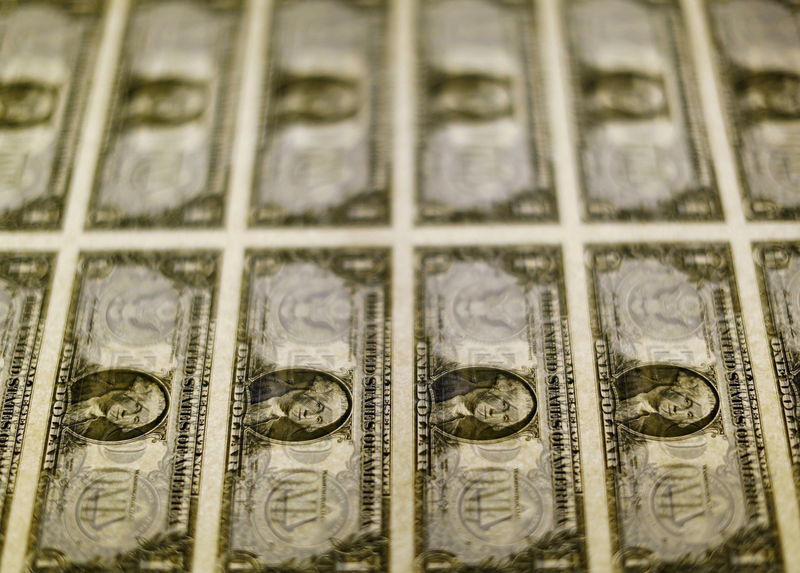Investing.com - The dollar extended gains to hit seven-week highs against other major currencies on Wednesday, as expectations for a March rate hike by the Federal Reserve continued to lend broad support to the greenback.
The greenback strengthened after Dallas Fed President Robert Kaplan reiterated his view on Monday that a rate hike should come sooner rather than later in order to curb rising inflation.
New York Fed President William Dudley said that the case for tightening monetary policy "has become a lot more compelling".
Meanwhile, San Francisco Fed President John Williams said that a rate increase was very much on the table for serious consideration at the March meeting given full employment and accelerating inflation.
In a highly-anticipated speech to the Congress late Tuesday, U.S. President Donald Trump announced broad overhaul of the U.S. immigration system and vowed to pursue massive tax relief for the middle class but stopped short of giving any details.
Markets shrugged off a report by the U.S. Commerce Department saying that personal spending increased by 0.2% in January, compared to expectations for a 0.3% rise.
EUR/USD slid 0.48% to a fresh one-week low of 1.0525.
Germany's Federal Statistics Office reported on Wednesday that the unemployment rate was unchanged at 5.9% this month, in line with analyst expectations.
The number of unemployed people declined by 14,000 from a month earlier, compared to forecasts for a drop of 10,000.
Elsewhere, GBP/USD declined 0.61% to a six-week trough of 1.2305 after research group Markit said its U.K. manufacturing purchasing managers’ index fell to 54.6 last month from a reading of 55.9 in January.
Analysts had expected the index to inch down to 55.6 in February.
USD/JPY rallied 0.93% to 113.80, the highest since February 16, while USD/CHF gained 0.57% to 1.0114.
The Australian dollar was little changed, with AUD/USD at 0.7657, while NZD/USD tumbled 1.04% to 0.7117.
Earlier Wednesday, the Australian Bureau of Statistics said gross domestic product rose by 1.1% in the fourth quarter of 2016, beating expectations for a growth rate of 0.7%, after a contraction of 0.5% in the three months to September.
Year-on-year, Australia’s economy grew 2.4% in the last quarter, compared to expectations for 1.9%.
A separate report data showed that activity in China’s manufacturing sector accelerated at a faster than expected rate in February. China is Australia’s largest export market.
Meanwhile, USD/CAD rose 0.20% to trade at 1.3323, the highest since January 20.
The U.S. dollar index, which measures the greenback’s strength against a trade-weighted basket of six major currencies, was up 0.52% at 101.86, the highest since January 11.
